Inbal Magar
Jamba-1.5: Hybrid Transformer-Mamba Models at Scale
Aug 22, 2024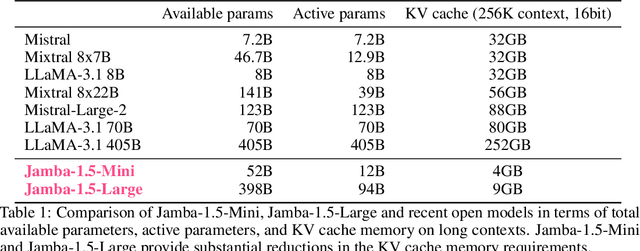
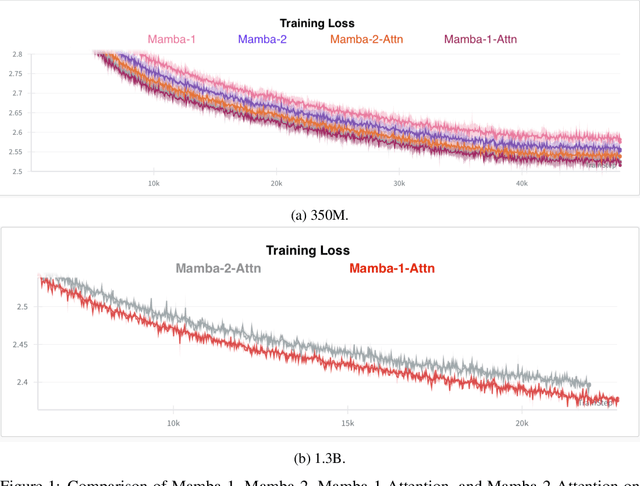
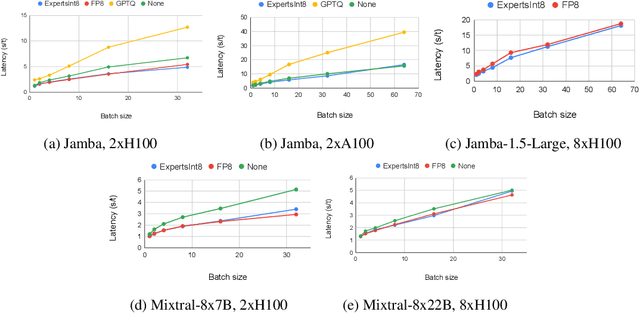
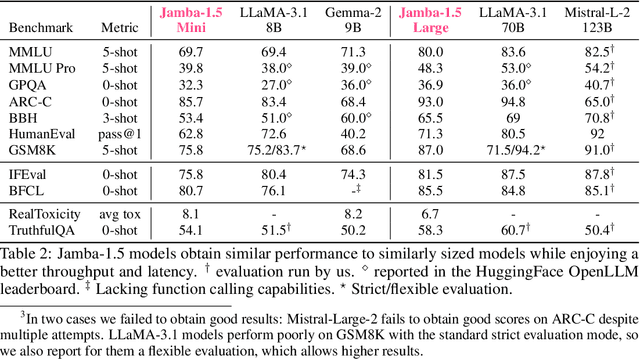
Abstract:We present Jamba-1.5, new instruction-tuned large language models based on our Jamba architecture. Jamba is a hybrid Transformer-Mamba mixture of experts architecture, providing high throughput and low memory usage across context lengths, while retaining the same or better quality as Transformer models. We release two model sizes: Jamba-1.5-Large, with 94B active parameters, and Jamba-1.5-Mini, with 12B active parameters. Both models are fine-tuned for a variety of conversational and instruction-following capabilties, and have an effective context length of 256K tokens, the largest amongst open-weight models. To support cost-effective inference, we introduce ExpertsInt8, a novel quantization technique that allows fitting Jamba-1.5-Large on a machine with 8 80GB GPUs when processing 256K-token contexts without loss of quality. When evaluated on a battery of academic and chatbot benchmarks, Jamba-1.5 models achieve excellent results while providing high throughput and outperforming other open-weight models on long-context benchmarks. The model weights for both sizes are publicly available under the Jamba Open Model License and we release ExpertsInt8 as open source.
Generating Benchmarks for Factuality Evaluation of Language Models
Jul 13, 2023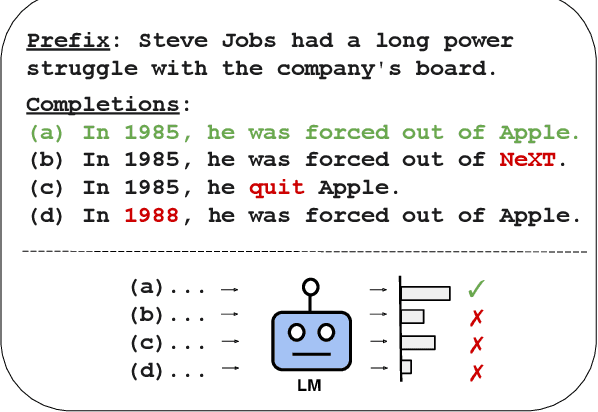
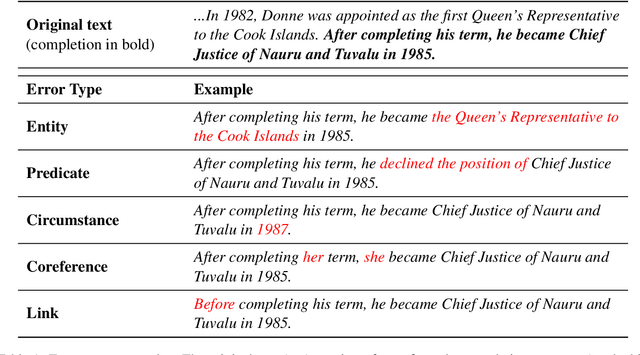
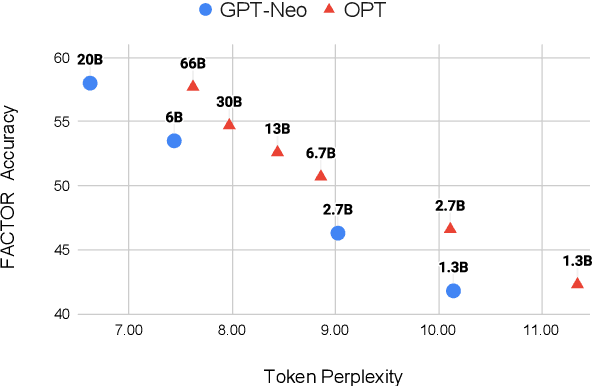
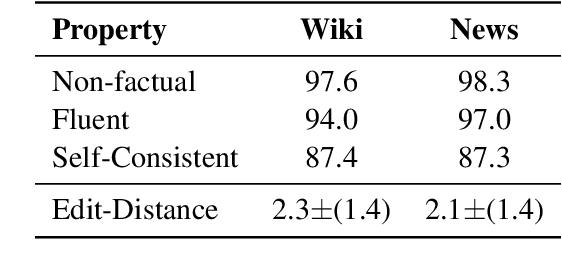
Abstract:Before deploying a language model (LM) within a given domain, it is important to measure its tendency to generate factually incorrect information in that domain. Existing factual generation evaluation methods focus on facts sampled from the LM itself, and thus do not control the set of evaluated facts and might under-represent rare and unlikely facts. We propose FACTOR: Factual Assessment via Corpus TransfORmation, a scalable approach for evaluating LM factuality. FACTOR automatically transforms a factual corpus of interest into a benchmark evaluating an LM's propensity to generate true facts from the corpus vs. similar but incorrect statements. We use our framework to create two benchmarks: Wiki-FACTOR and News-FACTOR. We show that: (i) our benchmark scores increase with model size and improve when the LM is augmented with retrieval; (ii) benchmark score correlates with perplexity, but the two metrics do not always agree on model ranking; and (iii) when perplexity and benchmark score disagree, the latter better reflects factuality in open-ended generation, as measured by human annotators. We make our data and code publicly available in https://github.com/AI21Labs/factor.
Fewer Errors, but More Stereotypes? The Effect of Model Size on Gender Bias
Jun 20, 2022



Abstract:The size of pretrained models is increasing, and so is their performance on a variety of NLP tasks. However, as their memorization capacity grows, they might pick up more social biases. In this work, we examine the connection between model size and its gender bias (specifically, occupational gender bias). We measure bias in three masked language model families (RoBERTa, DeBERTa, and T5) in two setups: directly using prompt based method, and using a downstream task (Winogender). We find on the one hand that larger models receive higher bias scores on the former task, but when evaluated on the latter, they make fewer gender errors. To examine these potentially conflicting results, we carefully investigate the behavior of the different models on Winogender. We find that while larger models outperform smaller ones, the probability that their mistakes are caused by gender bias is higher. Moreover, we find that the proportion of stereotypical errors compared to anti-stereotypical ones grows with the model size. Our findings highlight the potential risks that can arise from increasing model size.
Data Contamination: From Memorization to Exploitation
Mar 15, 2022



Abstract:Pretrained language models are typically trained on massive web-based datasets, which are often "contaminated" with downstream test sets. It is not clear to what extent models exploit the contaminated data for downstream tasks. We present a principled method to study this question. We pretrain BERT models on joint corpora of Wikipedia and labeled downstream datasets, and fine-tune them on the relevant task. Comparing performance between samples seen and unseen during pretraining enables us to define and quantify levels of memorization and exploitation. Experiments with two models and three downstream tasks show that exploitation exists in some cases, but in others the models memorize the contaminated data, but do not exploit it. We show that these two measures are affected by different factors such as the number of duplications of the contaminated data and the model size. Our results highlight the importance of analyzing massive web-scale datasets to verify that progress in NLP is obtained by better language understanding and not better data exploitation.
 Add to Chrome
Add to Chrome Add to Firefox
Add to Firefox Add to Edge
Add to Edge